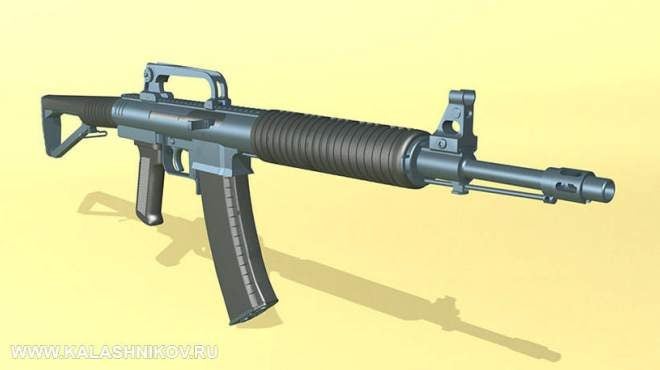Russian concept arms designer Alexey Tarasenko’s firearm designs have been published in Kalashnikov Gun Magazine several times. In this article, we’ll take a look at the designer’s latest concept of an assault rifle that is designed to solve the problem of efficient burst firing by decreasing the felt recoil and its influence on the stability of the weapon system. Kalashnikov Gun Magazine kindly gave us a permission to use the information and images from their article.
If you had a chance to shoot a fully automatic assault rifle, you will agree that it is quite a challenge to control the bursts. Even if you can get decent groups on close quarter targets, scale that up to 100, 300 or 500 meters and you’ll see that it is still a problem. And these are normal military distances for an assault rifle. From a bipod-supported prone position you can still get good burst fire results at the mentioned ranges, but things dramatically change when you try to engage the same targets from unstable positions and without any support. Trying to hit a man-sized target at 300 meters from standing position with a burst normally becomes a total waste of ammunition. You’ll most likely hit the target with the first round only and have the remaining rounds of the burst doing a suppression work utmost.
Of course, this is not true for everyone. I don’t exclude the possibility of someone being able to engage the targets with all rounds of the burst at the mentioned distances. Some people may have mastered they weapon system to a level of such control. But that would rather be an exception. The vast majority of military personnel won’t be able to do that. Which is ok. You can’t ask every soldier to be a marksman or a Navy SEAL grade master of his art.
Although simple mechanical solutions like stocks being in-line with the bore axis, muzzle brakes and muzzle rise compensators solve these problems to a certain extent, the major armies of the world are constantly seeking a way of effective and reasonable recoil mitigation solutions and weapon designs. Particularly, since this article is about a Russian design, let me remind you that Russians had very large trials dedicated to this subject. The Abakan trials tried to solve the problem with delayed recoil impulse (ultimately adopted in AN-94 Abakan) and balanced action mechanisms. The reason why these wonder systems didn’t become widespread is that anything comes with tradeoffs. Both systems are complicated and heavy compared to a normal assault rifle.
Alexey Tarasenko has his own solution to this problem which he calls “mechanism with vibratory recoil absorption”. The whole mechanism of his design cycles on two parallel recoil spring guide rods. The system works using the inertia operation principle. It has a stiff inertia spring between the bolt and bolt carrier. Upon firing, the barrel with the locked bolt starts to move backwards on the recoil spring guide rods. The bolt carrier is connected to the recoiling barrel/bolt system only by the inertia spring. The reciprocating parts try to push the floating bolt carrier backwards via the inertia spring. However, obeying the inertia law, the bolt carrier being in rest tries to remain in rest thus resulting in the compression of the inertia spring. Then the compressed inertia spring extends throwing the bolt carrier back which in its turn unlocks the system and cycles the action.
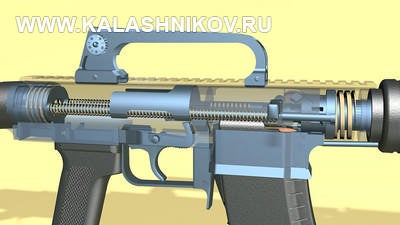
A similar system is utilized in many modern inertia-operated shotguns, except these shotguns rely on the recoiling motion of the gun itself and are prone to malfunctions or at least are sensitive to ammunition and don’t like to be accessorized (weight increase causes short stroking). That’s the reason why you don’t see military or LE inertia operated shotguns. In the case of Tarasenko design, the barrel will consistently recoil no matter how firmly the weapon is held or how heavily it is accessorized.
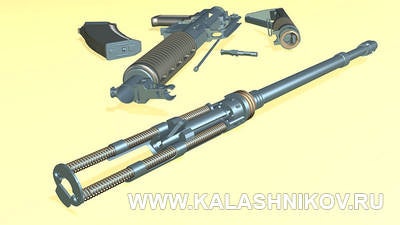
Next key feature of this concept is the front and rear buffer springs. The barrel of Tarasenko rifle moves only for a very little distance just enough to actuate the inertia mechanism. Then it stops transferring its energy to the rear buffer (installed inside the stock) via the recoil spring guide rods. Then the rear buffer spring pushes back the barrel to the front buffer spring. In other words, while the bolt carrier cycles the action, the barrel bounces back and forth between the rear and front buffers gradually coming to rest. This bouncing motion of the barrel is very fast and consists of short and abrupt back and forth motions reminding a vibration. Hence the name vibratory recoil absorption. The BCG also interacts with these rear and front buffers in its rearmost and foremost positions thus mitigating its impacts in a similar fashion.
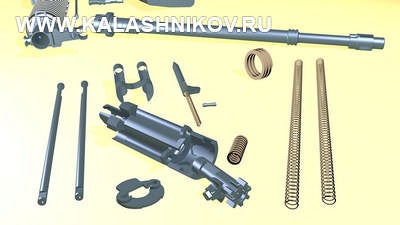
So, this system is kind of a combination of the short barrel recoiling and inertia operating systems with an addition of dual buffer spring mechanism and vibratory absorption of the energy of reciprocating parts. The recoil energy obviously can’t disappear. It is just extended, slowed down and transformed into heat by the work it does.
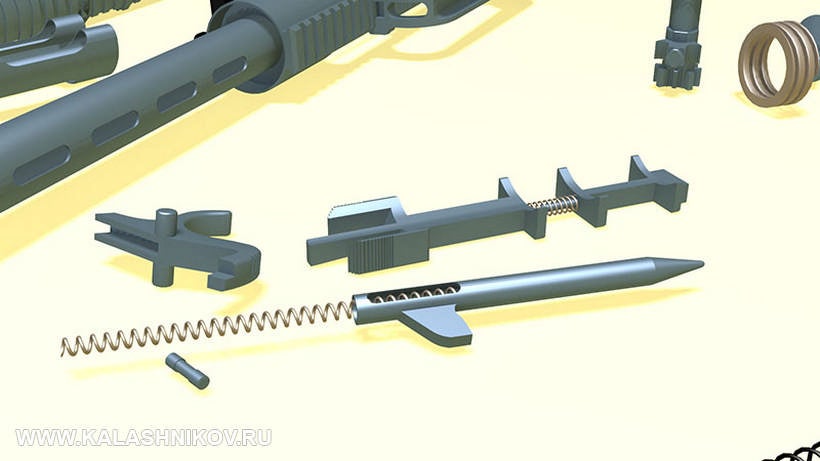
This rifle is designed to be a striker-fired one with a very simple trigger mechanism. The bolt carrier and bolt have interacting surfaces designed to prevent the premature rotation of the bolt during the cycling of the action. Once the multi-lug bolt feeds a fresh round from the magazine and engages the breech face, the barrel extension hits the bolt carrier breaking the joint between the bolt and bolt carrier and allowing the latter to travel a bit more forward rotating the bolt and locking the action. At this point the striker gets cocked and the bolt carrier releases it once the system is completely locked. If the trigger is released, it captures the tail of the striker preventing it from hitting the primer.
The rate of fire is adjusted by another mechanism built into the stock. It is an inertia rate reducer which captures and holds the BCG on its rearmost position for a fraction of a second thus reducing the cyclic rate.
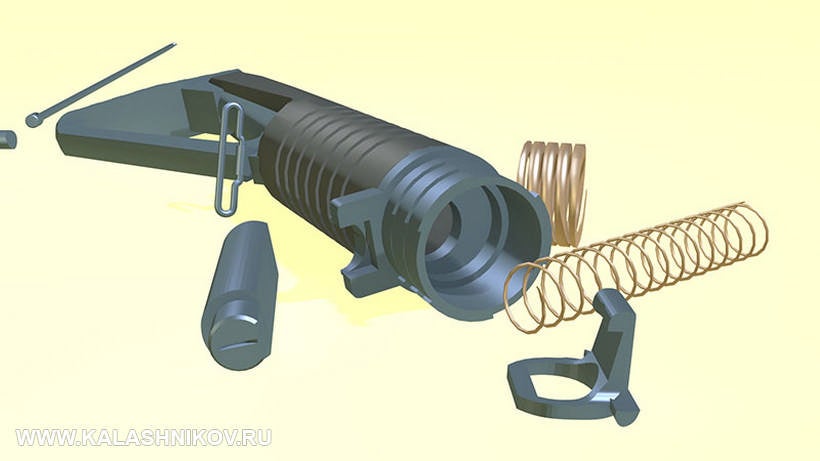
The mechanism of this rifle is inline with the bore axis which also should help to mitigate the recoil and get controlled bursts.
The whole weapon consists of 33 parts and can be completely disassembled without the use of any tools. The field stripping breaks it down to 9 major assemblies.
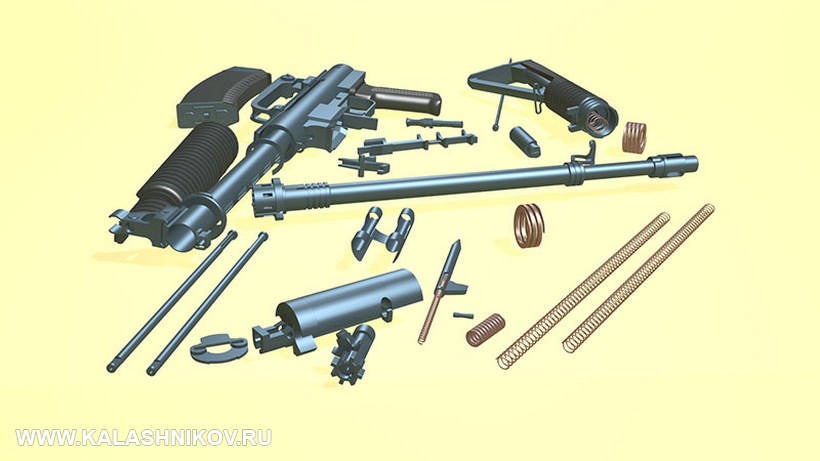
The designer also mentions that this firearm is easy to manufacture due to a wide use of cylindrical parts (easy to turn on lathes) as well as utilization of sheet metal stamping and welding processes which are also beneficial techniques for mass production.
This concept seems to be pretty simple mechanically with less and simpler parts, but it should be quite a challenge to make it work properly. Although the recoiling barrel won’t be affected by the weight of accessories mounted on the gun, it would most certainly be sensitive to the added weight and effects of muzzle devices like muzzle brakes or suppressors. I also think that there is a chance of this system being sensitive to the projectile weight. For example, if it is chambered in 5.56x45mm, then it would have to cycle properly with all types of military projectiles including the 55, 63 and 77-grain ones.
At any rate, I’ll agree with the conclusion of the Kalashnikov Gun Magazine and also say that whether this system will work or not is only possible to find out by making a real working prototype. It is too hard to predict the real-world behavior of such an unusual system. If the designer does make a prototype, we’ll keep our readers informed about it.
P.S.
While I was preparing this article, Kalashnikov Gun Magazine has published an update concerning this subject. They found out that in the mid-’60s, Soviet Union was experimenting with a similar concept. In 1965, TsNII TochMash designed a rifle called AO-34 utilizing such mechanism. The firing process itself, as well as the forward and backward contact points of the BCG, were buffered by a system of springs. The field tests showed 1.5 times effectiveness increase compared to normal assault rifles when shooting from unstable positions. However, for unknown reasons (possibly due to the complicated mechanism), AO-34 was not adopted.
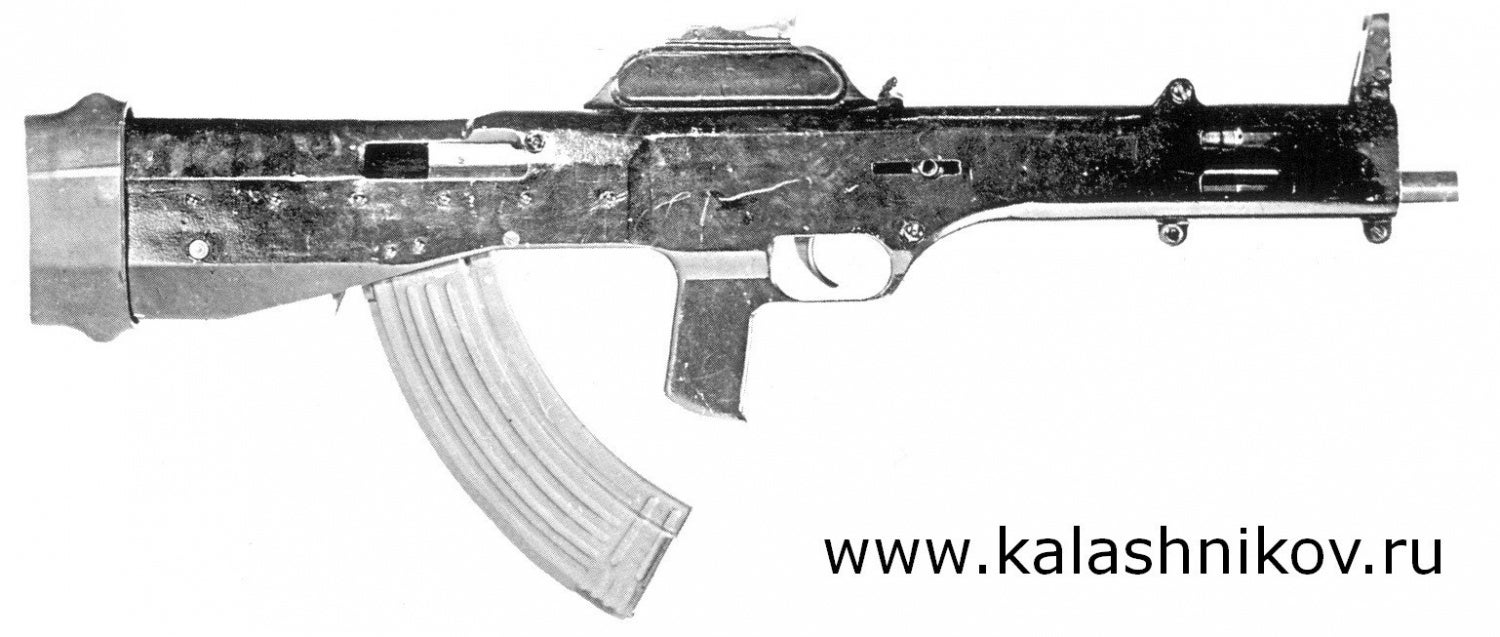
AO-34
Everything old is new again!
 Your Privacy Choices
Your Privacy Choices
